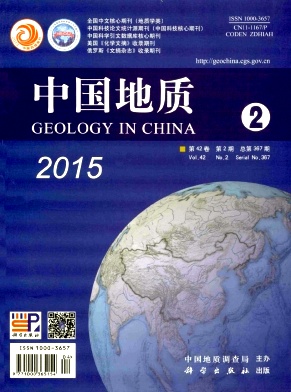ZHANG Shun1, CHEN Shi-yue1, WU Zhi-ping1, WANG Yong-shi 2, LI Wei2, LUO Yang 1, HOU Xu-bo3, ZHANG Lin 4. The application of the erosion thickness restoration method to red beds in the western part of the south slope in Dongying Depression[J]. Geology in China, 2015, 42(2): 720-736.
| Citation: |
ZHANG Shun1, CHEN Shi-yue1, WU Zhi-ping1, WANG Yong-shi 2, LI Wei2, LUO Yang 1, HOU Xu-bo3, ZHANG Lin 4. The application of the erosion thickness restoration method to red beds in the western part of the south slope in Dongying Depression[J]. Geology in China, 2015, 42(2): 720-736.
|
The application of the erosion thickness restoration method to red beds in the western part of the south slope in Dongying Depression
-
1. College of Geo-Resources and Information, China University of Petroleum, Qingdao 266555, Shandong, China; 2. Geophysical Research Institute of Shengli Oilfield, Dongying 257022, Shandong, China; 3. Research Center of New District in West China of Shengli Oilfield, Dongying 257015, Shandong, China; 4. Geological Scientific Research Institute of Shengli Oilfield, Dongying 257015, Shandong, China
-
Abstract
Abstract: The sedimentary rocks from Kongdian Formation to the early period of the fourth member of Shahejie Formation in the western part of the south slope of Dongying Depression consist of a set of red beds mainly comprising red terrestrial clastic sediments. Based on an analysis of applicability of erosion thickness with different restoration methods and a comparative evaluation of different methods for restoring erosion thickness, the authors have found that the tectonic cross section method can be mainly used to define the erosion thickness interval and eroding range of calibration, the mudstone acoustic time and deposition rate method is suitable for the identification of the numerical interval of erosion thickness, the acoustic interval transit time method is better than other methods in the area near the uplifted block of Linnan fault and Gaoqingpingnan fault, the optimization deposition rate method is better than other methods in Pingfangwang area, and the optimized porosity method is more accurate in the red layers, especially in the lower member of Es4 formation. The results from inclusion thermometry testing method and vitrinite reflectance method can only be regarded as the single well data points for reference.
-

-
-
Access History







 DownLoad:
DownLoad: